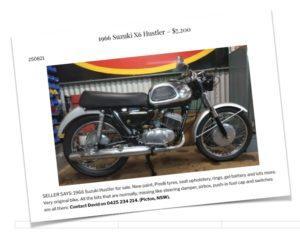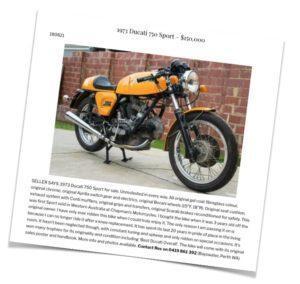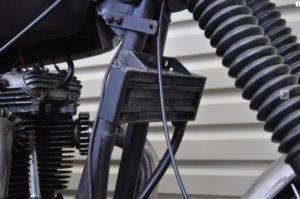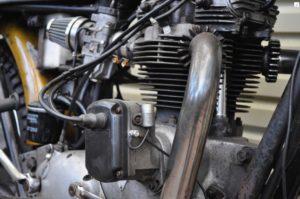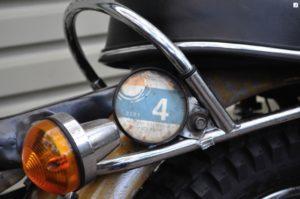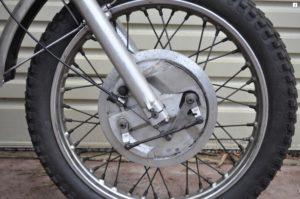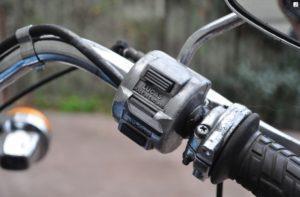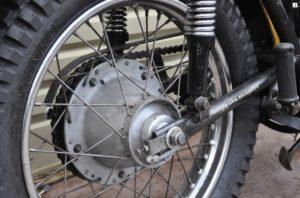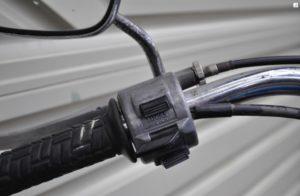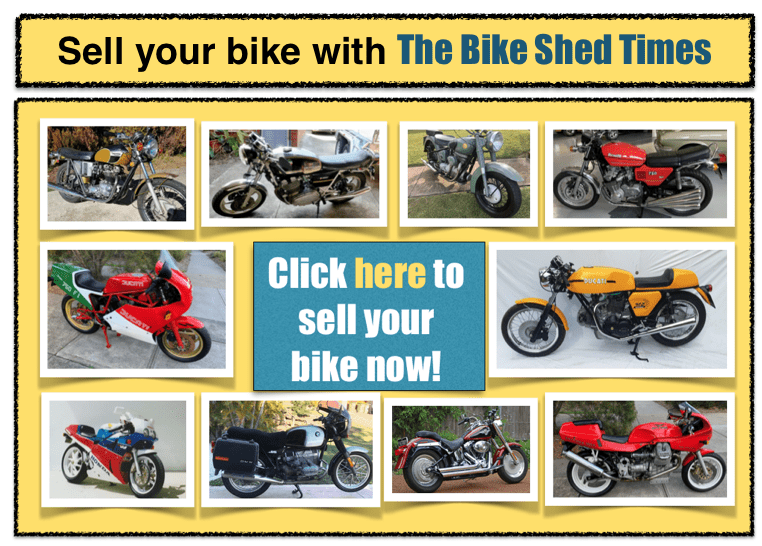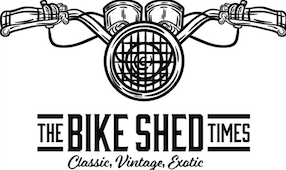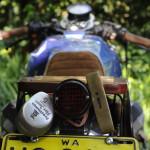
Wasn’t the world a simple place back in the good old days? If you wanted to sell your motorbike, you’d wheel it out to the front lawn, prop a ‘for sale’ sign against the front wheel, and wait for someone to knock on your door. Yup, the world sure has changed. But has it, really? In this article, THE POSTMAN talks with The Bike Shed Times Editor Peter Terlick about how to sell old motorbikes in Australia, in the 21st Century.
ONE of the realities of the classic and vintage motorcycle market is that most of us — buyers and sellers alike — aren’t as young as we used to be. Like our bikes, we’ve been around the block a few times, perhaps had some minor (or major) components replaced, and have been perfectly happy using whatever tools and technology we grew up with. When we’re in the shed, spanners in hand, the TV blaring, maybe a beer on the bench, it seems we don’t need to engage with the 21st Century at all.
But when the time comes to sell our classic or vintage motorbike, we discover things have changed. For a start, we no longer recommend leaving a BSA Gold Star or green frame Ducati unaccompanied on your front lawn …
The Bike Shed Times Editor Peter Terlick says the biggest change is the technology we use to communicate.
“People are still people, bikes are still bikes,” Peter says.
“In a way, selling a motorbike hasn’t really changed. You just need to find the person — just one person — who wants your bike and is willing to pay what you’re asking.”
Peter says there are three simple steps to selling a classic or vintage bike … they are:
Step 1 – Get the bike ready to sell.
Step 2 – Set a price.
Step 3 – Find a buyer.
Let’s go through these, one at a time.
Step 1. Get the bike ready to sell.
“I don’t generally recommend spending a huge amount of time and money getting a bike ready to sell,” Peter says.
“It is what it is. If the price is reasonable, someone out there will want it. Most people don’t expect an old bike to be in new-bike condition. And many buyers actually prefer to have some restoration or repair work to do, so don’t sweat some work to be done!
“But there is a but — in fact, there are two. First, you should get your bike clean, and second, unless it requires spending lots of money, you should get it running. These two suggestions will have the biggest impact on the selling price of your bike and make it massively easier to sell. If it’s dirty and it won’t start, your asking price will need to take into account the possibility that the bike’s major components are all stuffed — because that’s what the buyer will, quite reasonably, assume!”
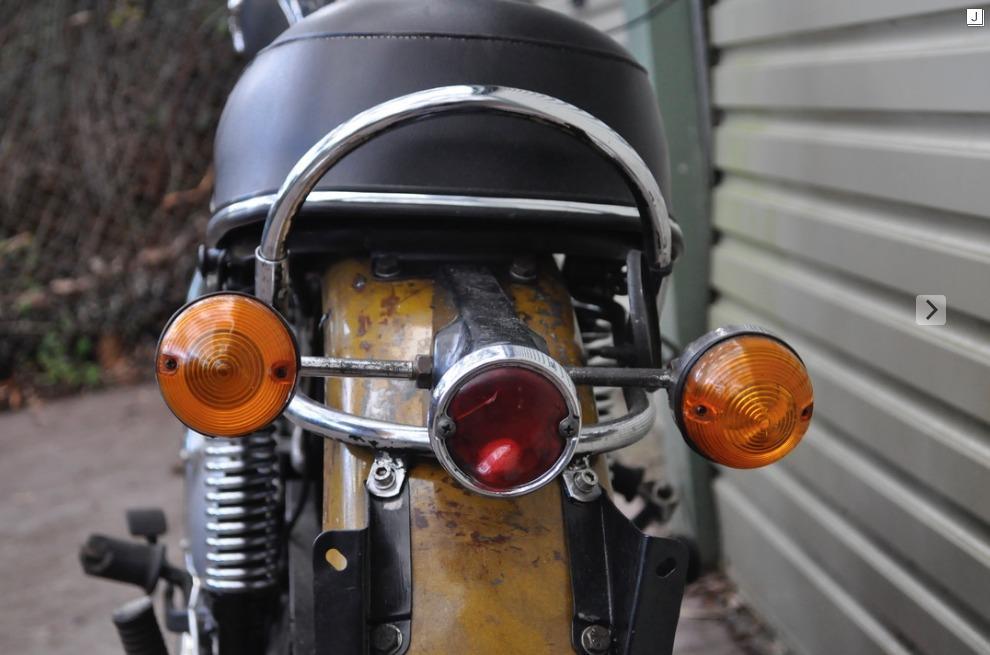
“If you’re serious, set aside a whole day. Give the paint a polish (I’ve used the old-fashioned green Turtle Wax on everything I’ve owned), give the chrome a polish (Autosol, every time), and give the bike a basic service — fresh plugs, fresh oil if it’s due, adjust and lube the chain, adjust the brakes, charge the battery, pump up the tyres — you know the drill. This is time well spent, believe me, because buyers like to see a bike that’s been cared for.
“If the engine starts and you can ride it up and down the driveway, the buyer knows the engine and gearbox are intact and functioning, so it’s less likely that expensive nightmares await.”
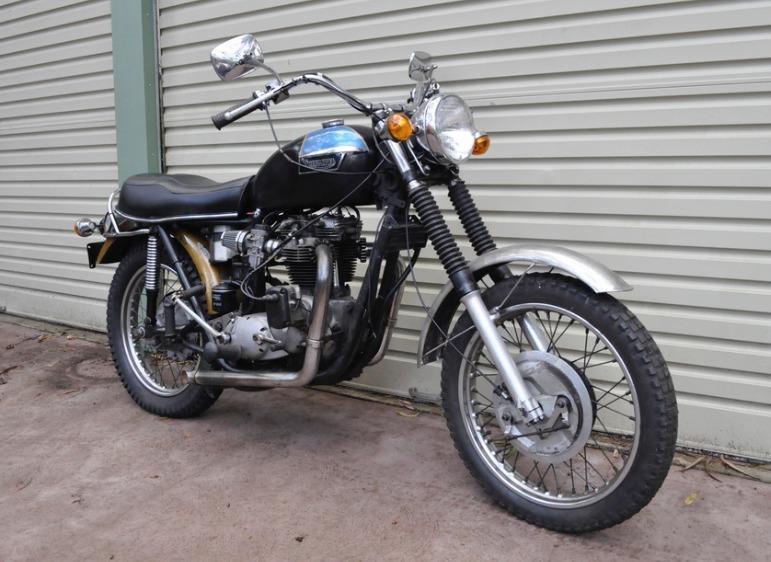
Step 2. Set a price.
“You should always include a price in your advertisement,” Peter says.
“If you don’t know what it’s worth, how on earth can you expect someone else to know? And if you really don’t know what it’s worth, are you going to take advice from someone who wants to buy it? No, you’re not. Do some research, and set a price.”
So what’s she worth? Good question! Peter says modern technology is your friend in this area.
“Start by taking a look at the usual ‘for sale’ forums (including The Bike Shed Times of course) to see if there are other bikes like yours for sale, and what other people are asking.
“Then do a simple internet search,” he says “and that really is easy!
“Let’s say you’re trying to sell a BSA Gold Star. Get yourself in front of a computer and type into Google ‘BSA Gold Star for sale‘. You will be presented with a bunch of articles and advertisements to read, from all over the world. Compare the quality of your bike to the ones on your screen, and you should be able to decide on a logical asking price.
“Advertisements from within Australia will be most useful, because they are in the same market as you so the prices will be more relevant. But if your bike is something more unusual, then adverts from overseas might be the best you can hope for. At least you then have a starting point for a sensible price.”
Peter says the asking price is not the same as the selling price.
“When you are looking at advertisements, you are seeing what people are hoping to get — the actual selling price is almost always lower. The most valuable information, if you can get it, is actual selling prices. If you have the time, it’s worth jotting down sellers’ telephone numbers, waiting until their bike sells, then calling them up and having a conversation. Most folks will happily have a chat!
“It’s also useful to watch the market for a few months before setting your selling price. Bikes that sell quickly might have been under-priced. Bikes that remain on the market unsold for several months are probably over-priced — this isn’t necessarily true, but it’s a reasonable assumption to make.”
Step 3 – Find a buyer
a) Tell your mates.
Peter says anyone trying to sell an older bike should first seek a buyer close to home, then spread out if necessary.
“The first thing to do, honestly, is find out whether any of your friends or family are interested in buying your bike,” he says,
“Just let it be known that you are going to sell. Tell people! If you are in a bike club or have a group of motorbike-owning friends, make sure they are aware you’re selling. People nearby are the easiest to find, and you will have some buyer/seller trust which is helpful.”
If your personal network doesn’t flush out a buyer, you will need to advertise — and that means writing some words and taking some photographs.

b) Write an ad
“Believe it or not, your advert’s job is NOT to sell your bike! It’s job is to make prospective buyers pick up the phone and talk to you. So don’t bother writing war and peace, keep things succinct.
“And there’s no point being dishonest with your words, nor being arty with your photos,” Peter says.
“At some point the prospective buyer is going to see your bike, after all!
“But at the same time, you do want to paint your bike in the best possible light.
“With your words, provide the basic facts — year, model, does it run, is it licensed, what’s the price — and list any significant accessories, spare parts, or improvements. You do not need to write a novel. Present the facts, then provide a brief and honest description of the bike’s condition — everyone understands the difference between ‘poor’, ‘average’, ‘good’, ‘excellent’ and ‘like new’. Use these terms honestly, and you’re on safe ground. You’ll also save time for everyone.”
c) Take some photos
Peter says photographs are “absolutely critical” when selling a classic or vintage motorbike.
“Honestly, the biggest mistake I see in most motorcycle advertisements is in the photos,” he says.
“They are the single most important element of selling your bike – more important than the words in your advert. You want a prospective buyer to look at the photo of your bike and say to himself: ‘Gee, that’s nice. I would like that in my shed.’ For that to happen, you must have a good photo.
“You do not need a professional photographer (you can do it yourself), and you don’t need an expensive camera (you can use your phone) — but you do need to make an effort.”
There are five basic photo rules.
- Get your bike out of the shed and find a bland, neutral background. A bare wall or garage door is fine!
- Turn your phone on it’s side, to get a horizontal format.
- Show us all your bike, including the headlight, with bars straight ahead or slightly towards the camera.
- Squat to headlight level for eye-to-eye contact.
- Avoid back-lighting. The best lighting is heavy cloud, usually early or late in the day. The sun should be behind you. Never shoot towards the sun, or in the midday sun when your whole bike will basically be in shadow from the seat and tank.
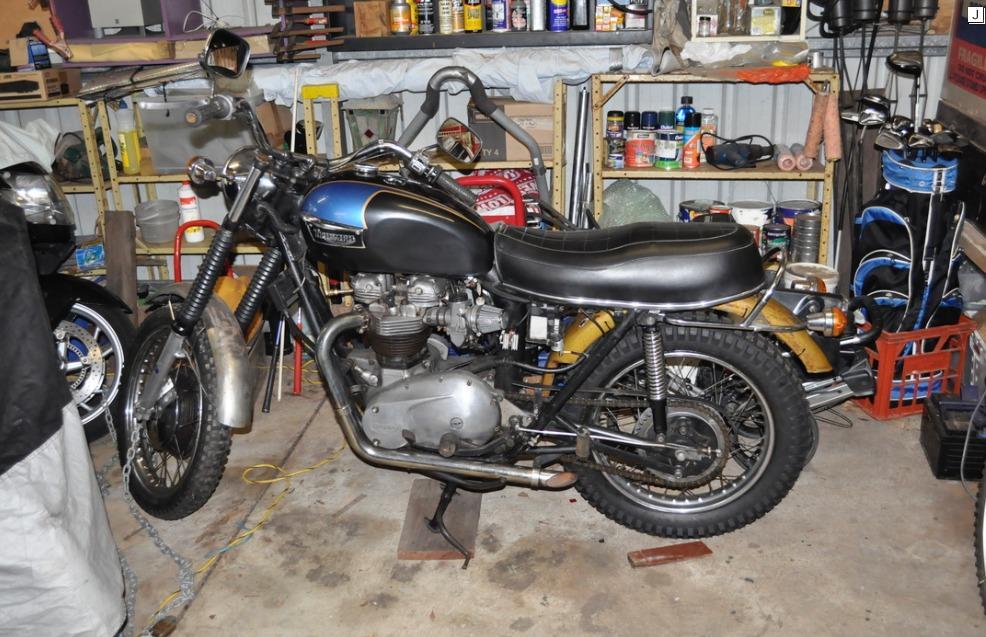
d) Lodge an advert
When it comes to choosing a place to advertise your bike, there are plenty of options.
Peter says the trick is to find the right audience.
“The fastest and most efficient approach is to put your advert where it will be seen by the right audience. If you’re selling an older bike, it’s most efficient to use a selling forum that attracts people interested in older bikes. You’re more likely to reach genuine buyers, and people who understand classic and vintage bikes.
“You can sell your bike with The Bike Shed Times of course, and I hope you do! We reach thousands of Australian classic and vintage bike enthusiasts and collectors, and we can help write your advert. But if you have your own network or bike club, start there for sure.”
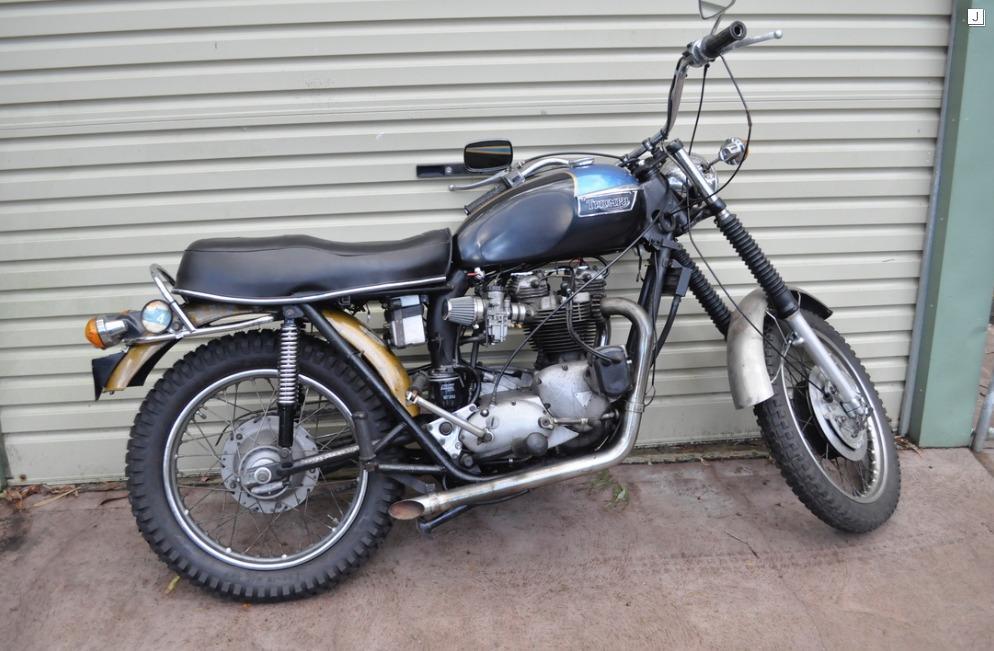
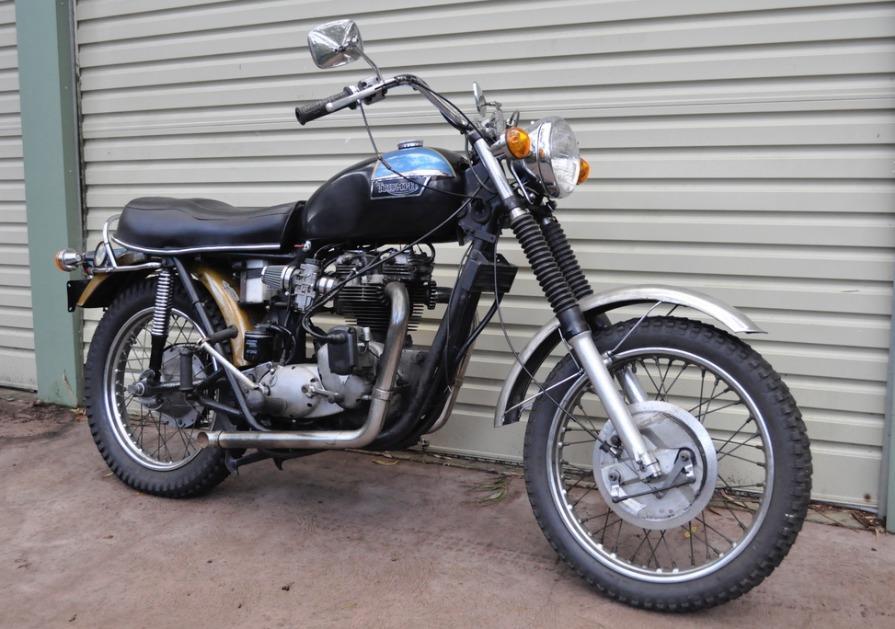
Three common mistakes
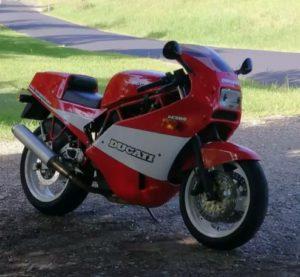
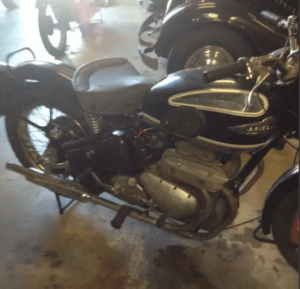
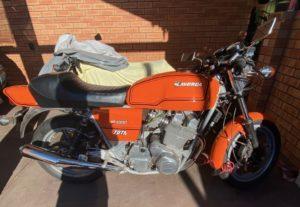
Shooting multiple photos
If your advertisement enables you to use multiple photos, take the opportunity to get in close. Don’t just shoot the bike in varying locations — move right in and get detail pics. The Bike Shed Times‘ advertising options provide a choice of either one-to-five photographs, or up to ten. You can also provide a video, and we’ll host it on our YouTube channel.
These are the sort of extra pics you should take, in addition to your main picture.
